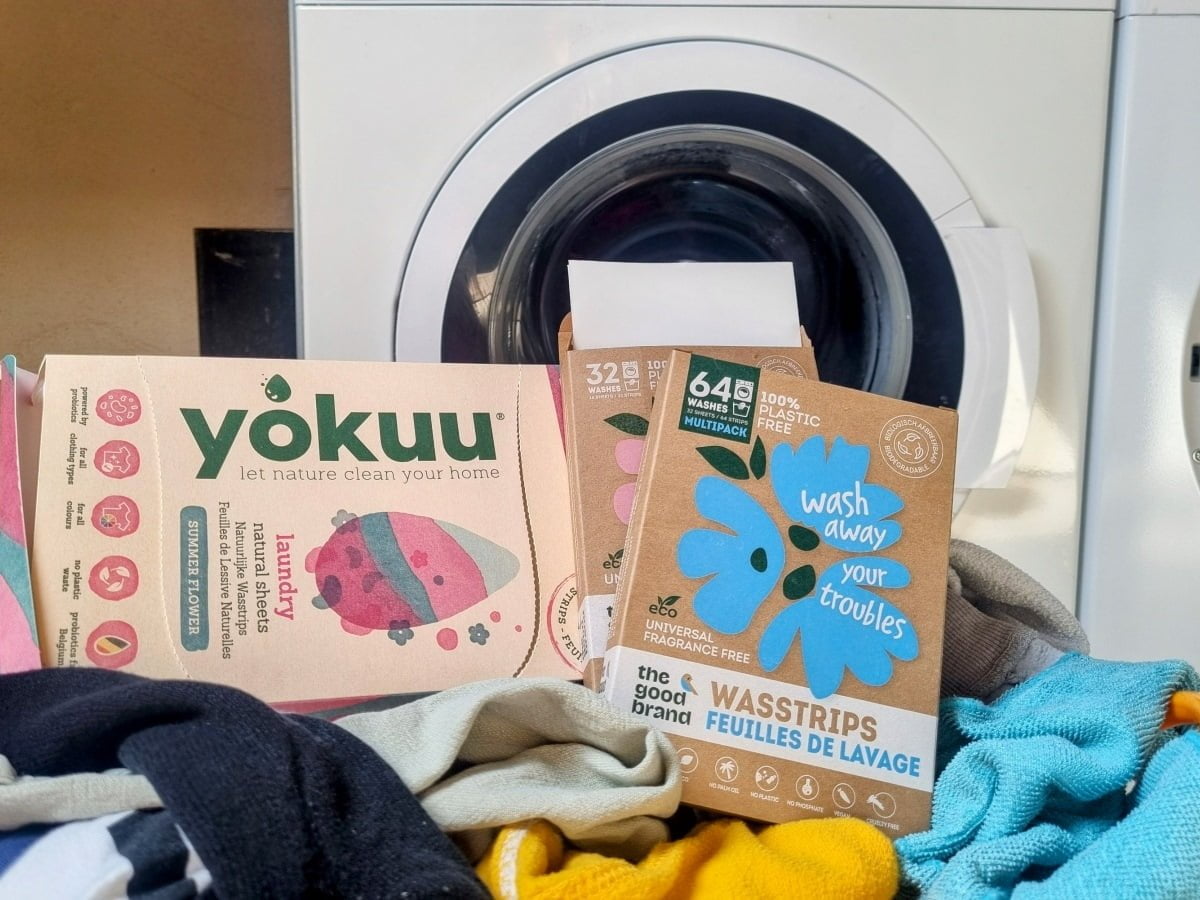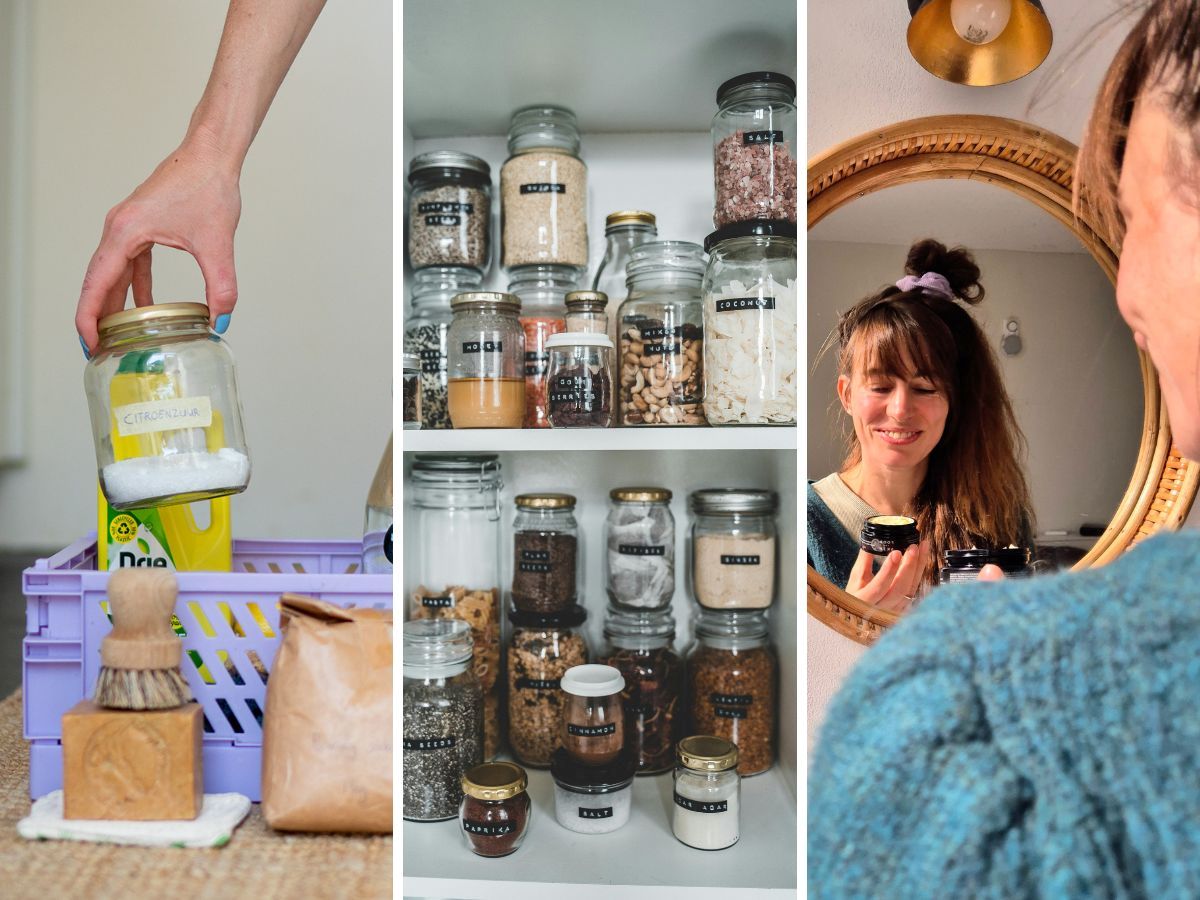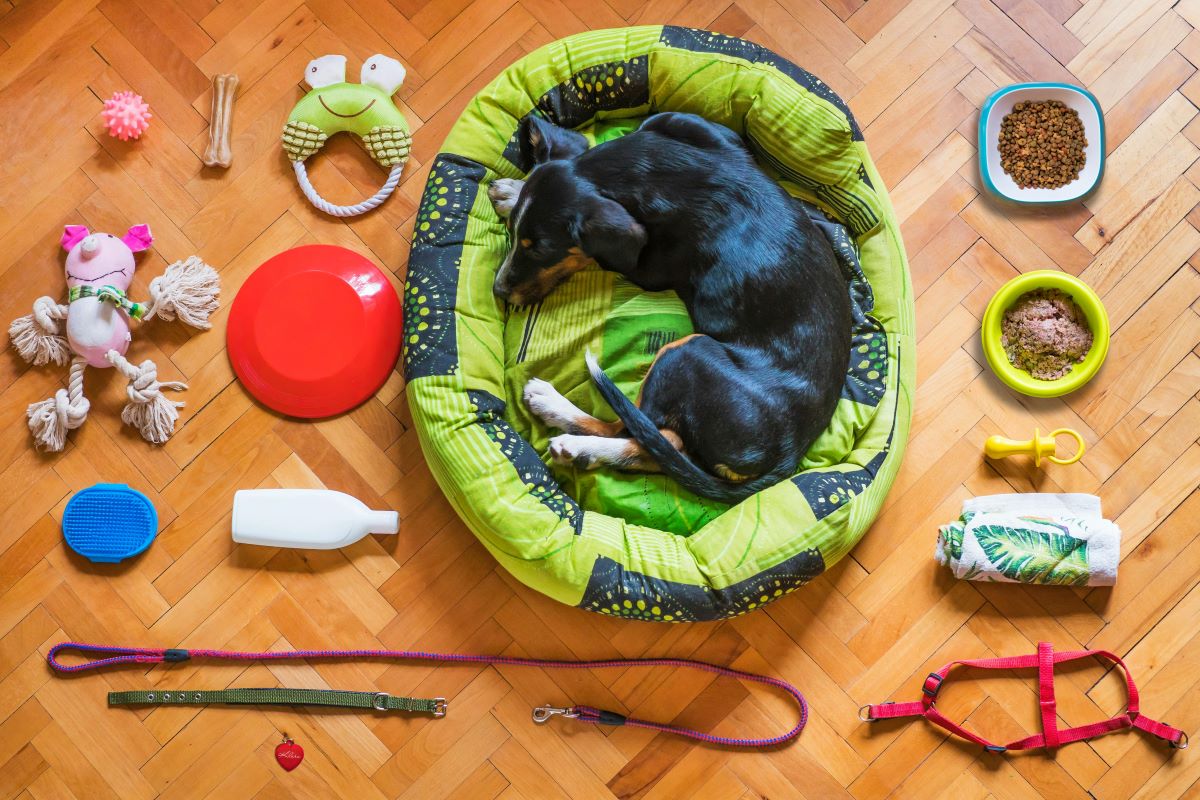Fancy wax strips! A small, lovely-smelling paper does the washing. You no longer need big plastic bottles and the washing machine would stay clean longer because there would be less soap residue. But how sustainable are these detergent wipes? We get a lot of questions about them. And there is only one way to find out. We are going to investigate! Follow the delicious smell!
What are wax strips?
Laundry strips or detergent wipes are thin, compact sheets made from (or containing) super concentrated detergent. You put these sheets on the bottom of your washing machine drum and it replaces the old familiar laundry ball of liquid detergent (or washing powder in the lid if you prefer to use that until now). Believe it or not, but those laundry strips or detergent wipes dissolve easily in water and promise to get your laundry as sparkling clean as your old trusty detergent. In short, a revolution in laundry detergent land if the manufacturers of those innovative wipes are to be believed. And so we started washing with them too. Spoiler: we are also enthusiastic, but one wax strip is not the other, it turns out.
Ecological ingredients in detergent strips
Our followers are also interested in these wonderful wash cloths and regularly ask us if wash strips are sustainable. That's a tricky question. Actually, that means you are asking whether laundry detergent is sustainable. You cannot say about an entire product group whether it is sustainable (or not). As with detergent, you have quite a lot of choice and therefore many differences with laundry strips. So yes, some laundry strips (like some detergents) are better for the environment because they have better ingredients or other nice properties. And others are less so or maybe not at all.
If we take a closer look at the detergent wipe, we notice that the producers like to talk about the sustainable features of their product. On the packaging, you will see fancy terms that will make your green heart beat faster: ‘eco-friendly’, ‘ecological’ or ‘made from plant-based ingredients’. We want your green glow not ruin it, but unfortunately this says very little. The terms ‘eco-friendly’ or ‘ecological’ are not protected names. Anyone can put it on their product. So this wash strip may be a more sustainable choice, but it doesn't have to be. Whatever the packaging may say. The reporters of the TV programme Keuringsdienst van Waarde exposed that grimly when they started investigating the green claims of cleaning products.
Also Milieu Centraal confirms this. They also argue that it cannot be said whether a wax strip with plant-based ingredients is better for the environment than a petroleum-based product. While vegetable ingredients are renewable and do not run out unlike petroleum, growing crops requires a lot of arable land, pesticides, fertilisers and water. And that too puts a strain on the environment. You might not expect it, but a cleaning product with synthetic ingredients can be a more sustainable choice than one made from 100% natural ingredients. Complicated? There's more you need to know about it.


Detergent strips have the advantage of needing less packaging and taking up less space during transport. Still, they are not necessarily more durable than liquid detergent.
Less plastic packaging through wax strips
Those little concentrated wash strips come in charming cardboard packaging, a kind of envelope. Goodbye mega bottles of liquid detergent! And that immediately excites our followers. They see the big advantage of no longer having to buy plastic bottles. That's certainly nice, but the real benefit of those mini-bottles is in the process of transportation (not so much with you). You don't have to be a maths prodigy to understand that far more laundry strips fit in a truck than all those litres of detergent, which often consists of more than 90% of water. Unnecessary. So less transport means less air pollution and less fuel consumption. In that respect, laundry strips have an advantage. See, that's how we like to see it.
Economical dosing with detergent strips
Economical dosing is the tip if you want to use your detergent more sustainably. It's better for your machine, your clothes and you waste less. The same goes for laundry strips, of course. And that is why many laundry strips have a very handy serrated edge that makes it easy to halve the wipes. So do that too, because it's a good habit. More on sustainable washing can be found in our article on sustainable washing.
Disadvantages of wax strips
Those laundry strips are promising and certainly have some great features, but there are also less enthusiastic voices. Laundry strips are often even more expensive than traditional detergents, which can be a barrier to using them. Proper dosing and thus halving wipes saves a lot! Moreover, not all users are equally enthusiastic about the washing results, as this test by the Consumer Association see. Fortunately, there are lots of different wax strips on the market, and we belong to thegreenlist.nl just a lot of positive stories from users. We ourselves have not been left behind with tests of a number of brands, such as The Good Brand, Yokuu, Brauzz and Brits, and we too are enthusiastic. So while we often agree with the Consumers' Association, this time we have a different experience.
Are there microplastics in wax strips?
So we are not so concerned about the washing result, but there is something else that worries us. As you may know, microplastics are found in cleaning products, so also in detergent unfortunately. This was revealed by research by Plastic Soup Foundation. And that's bad news, because they are deliberately added by manufacturers (why?) and so they end up in nature via the drain. And like ‘normal’ detergents, there can be microplastics in laundry strips too. With some brands, you are lucky: the manufacturer has put it on the packaging that their product does not contain microplastics. But otherwise, it's hard to find out because, unfortunately, manufacturers are not required to display all detergent ingredients on the label. Hmmm, that might make laundry strips less fresh than they smell....
To stay in the plastichook for a moment: in some wax strips, the ingredient appears to be polyvinyl alcohol (PVA). And we were quite shocked by that, although it is labelled as safe for now. PVA you know. It's also in that film layer that is around dishwasher tablets. It dissolves in water and is biodegradable. As a result, it would not contribute to the plastic soup. They say... Because there are also critical studies showing that PVA is basically just plastic that ‘dissolves’ or disintegrates into microplastics and can be found at the bottom of the ocean. More research into this appears to be necessary to conclude whether or not they are microplastics. To be continued, then, hopefully.



At thegreenlist.nl, we like to test new sustainable products, such as laundry strips.
So what can you look out for in these new detergent wipes?
Eco-friendly detergent can be recognised by an eco-label such as Ecogarantie, Nordic Swan Ecolabel, EU Ecolabel or Ecocert. This label guarantees the smallest possible impact on the environment and also excludes microplastics. But because wax strips are relatively new and certification often takes a long time and is not cheap, we have not yet come across any wax strips with an eco-label. That makes making a good choice more difficult. So until this market matures, there is nothing left to do but look very carefully at the ingredients and check the manufacturer. Laundry strips that don't have a seal of approval, but are highly regarded by us because they have other great features such as a sustainable mission, eco-friendly ingredients, are vegan and/or microplastic-free: Brauzz, Yokuu, The Good Brand, Eco-Max, OceanSaver, True Earth, HappySoaps, Zense, British and Cosmeau.
And, are wax strips environmentally friendly?
Our conclusion: laundry strips can certainly be a good choice, but as we previously concluded in an article on sustainable washing: the real difference you make is not with your detergent, but with how you wash. How often do you use the washing machine, which cycle do you use and at what temperature do you wash? Dosing and choosing environmentally friendly detergent also play a role, but it comes after your washing habits. Have you put those habits through the wash cycle? Then choosing better detergent is your next green step. And then laundry strips, especially the brands with eco-friendly labels or sustainable ambitions, can be a good choice. Just remember to dose them by tearing or cutting them into the right size. Good luck with them! If you have another great laundry strip tip - good scrabble word - , we would of course love to hear about it!
More sustainable tips from thegreenlist.nl
- Keep your washing machine looking good for longer by cleaning it regularly. We show you how to do this in an eco-friendly way.
- Stain removal: This will get almost all stains out of your clothes.
- Looking for eco-friendly cleaning products? We have listed all the good brands for you.
Photo credits: liquid detergent: RDNE Stock project (Pexels), washing machine drum: Mascha Bongenaar, Saskia washing machine: Angela de Vlaming, main image and other photos: thegreenlist.nl.












